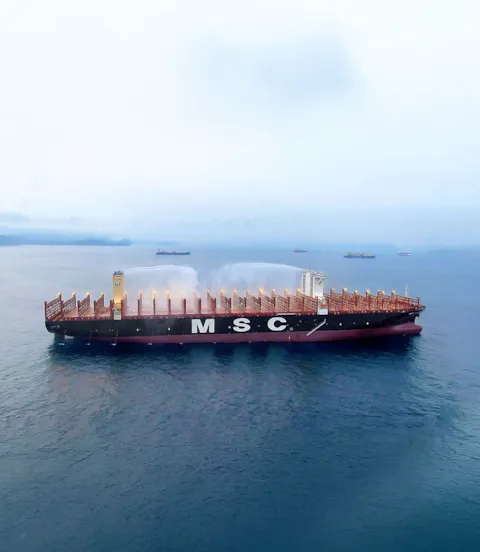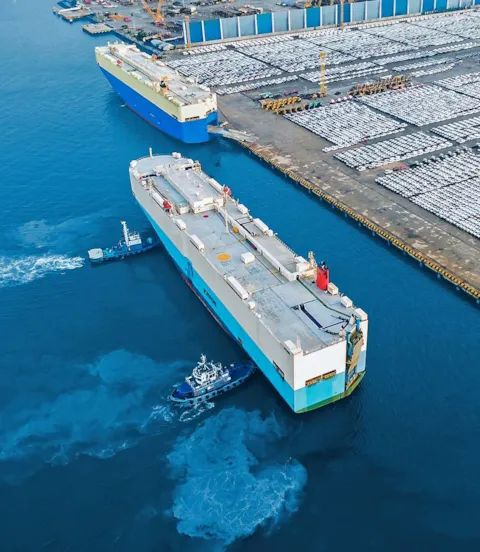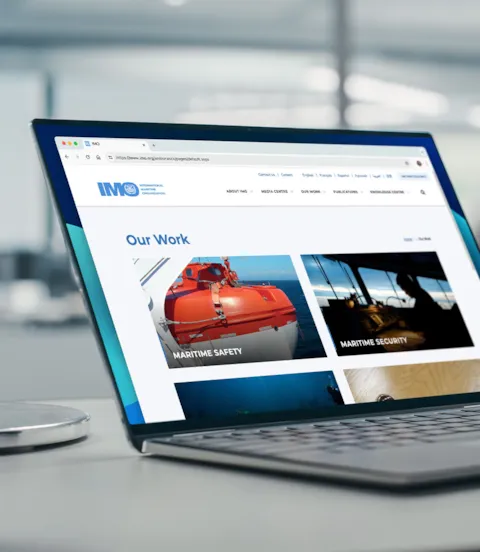Key IMO safety developments
The IMO is making significant progress towards modernising global maritime safety regulations, with new regulations that seek to enhance standards in order to accommodate new technologies and fuels, while making the maritime industry more adaptable and receptive to innovation.
The complexity of maritime safety is evident from the wide variety of topics currently on the agenda of the International Maritime Organization (IMO) – some of which are highlighted below.
Propulsion and steering – from prescriptive requirements to a goal-based format
Current regulations around propulsion and steering are part of the Safety of Life at Sea (SOLAS) treaty, which was drafted when most vessels were powered by conventional engines and manoeuvred by rudders. With so many other systems now available and in widespread use, work is underway to translate these existing requirements into a goal-based format that is suitable for all types of propulsion and steering – and which, we can presume, will also account for the wide variety of alternative fuels being introduced.
In its current form, SOLAS Chapter II-1 addresses traditional steering gear arrangements with a propulsion system and a rudder. Modern combined steering and propulsion systems (e.g. azimuth thrusters, waterjets) are, however, not addressed in the current regulatory framework, which is therefore seen as an obstacle to innovation.
The IMO is now working on a revision of SOLAS Chapter II-1 that addresses both traditional and non-traditional propulsion and steering systems. The new requirements will be goal-based and therefore naturally apply to all steering and propulsion system types. Crucially, they will be broader and more flexible than prescriptive regulations, outlining what needs to be achieved as opposed to how this should be achieved, allowing the IMO to define key safety criteria and leave the technical implementation to other stakeholders.
“A key benefit of goal-based requirements is that they provide the industry with the flexibility to accept new technologies and novel designs by meeting broad safety requirements instead of specific design criteria,” says Kathrine Ilje Nerland, Senior Principal Engineer and safety regulation expert at DNV. “In practice, this enables the maritime industry to adopt new fuels or operating systems with total clarity on safety expectations, while avoiding strict constraints on their ability to innovate.”

Fire safety for containerships
An increased number of serious fires in the cargo area on containerships has exposed technical challenges related to locating, containing, and fighting fires on these vessels.
The IMO is considering measures for the detection and control of fires in container cargo areas. These measures include:
- Requirements for portable infrared thermal imagers, suitable for screening containers and detecting hot areas
- Requirements and performance standards for water mist lances, including means for extended reach into containers
- Requirements and performance standards for mobile water monitors and fixed water monitors
- Water protection systems below the hatch coaming and pontoon hatches
One important consideration is that any regulations on tackling fires should aim to minimise any risk of danger to crew. “It’s important that regulatory updates improve technical safety without introducing new challenges, balancing the need to tackle fires with prioritising crew safety and welfare,” explains Nerland.

Charging up electric vehicle transport
An increasing number of electric and new-energy vehicles are being carried onboard ships. The IMO has agreed to consider if there are additional fire risks involved, for example related to the carriage of lithium-ion battery-powered vehicles.
Therefore, the IMO has developed an action plan to evaluate the adequacy of fire protection, detection, and extinguishing arrangements in vehicles, special category, and ro-ro spaces in order to reduce the fire risk of ships carrying new-energy vehicles. The action plan includes the analysis of reports, studies, and technologies; the identification of hazards; and the development of related goal-based measures.

Safe Return to Port (SRtP) progress
The Safe Return to Port (SRtP) concept was introduced in SOLAS in 2010 with the intention of increasing the robustness and fault tolerance of passenger ships. Even in the event of a flooding or fire incident, a ship should be able to return to port with its own machinery and provide a safe area for everyone on board. The SRtP regulations apply to passenger ships with a length of 120 metres or more, or with three or more main vertical zones.
The IMO is working on a revision of the “Interim Explanatory Notes for the Assessment of Passenger Ship Systems’ Capabilities After a Fire or Flooding Casualty” (MSC.1/Circ.1369) to facilitate uniform implementation of the concept, taking into account experience gained so far.
One of the key discussions revolves around the concept of remaining operational, particularly in terms of assessing passenger ship systems' capabilities after a fire or flooding incident and defining the criteria for what it means to stay operational.

Ensuring plain sailing for autonomous ships
The prospect of autonomous ships operating internationally with little or no human intervention has highlighted the need for a regulatory framework for such ships, including their interaction and co-existence with conventional manned ships.
The current regulatory framework generally assumes manning and human intervention. The IMO has agreed to first develop a non-mandatory, goal-based code, potentially entering into force as a mandatory code upon experience with its application. The purpose of the code is to provide a framework to address both the remote control and the autonomous operation of key functions of ships.
The chapters of the Maritime Autonomous Surface Ships (MASS) Code on risk assessment, remote operations, and connectivity are now nearing completion. The chapters on remote operation and connectivity will apply depending on the mode of operation and the functionality being applied.
The non-mandatory MASS Code is to be finalised by 2026, followed by an experience-building phase after its adoption. A mandatory code is expected to enter into force in 2032, at the earliest.

Prepare for change
DNV class customers are encouraged to visit the Compliance Planner to monitor how upcoming statutory requirements will impact their ships and subscribe to our Statutory newsletter sharing the main outcomes of safety relevant IMO meetings among others.

- Shutterstock / Gorodenkoff
- DNV
- MSC
- Shutterstock / anucha sirivisansuwan
